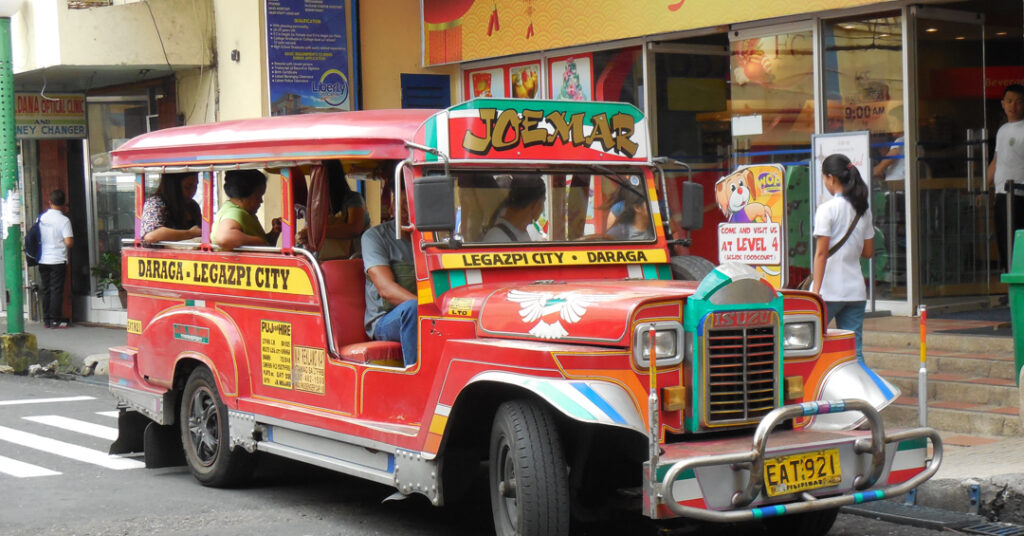Dayang Yraola celebrates the soundscape of the jeepney, the Philippines’ heritage public vehicle.
(A message to the reader.)
In the first week of March 2023, there was a massive transport strike in Manila, Philippines against the phase-out of jeepneys. Jeepney is a vehicle that is born from the scraps American colonial period. These are shared motorized public utility vehicles. The phase-out became an issue when the Philippine government released the Public Utility Modernization Program in 2017, which would replace 15 years or older vehicles with “safer, more comfortable, more convenient, more environmentally friendly alternatives.”
The objection coming from transport operators and drivers’ associations (commonly known as TODA) and their allies are of course centred on the disenfranchisement of approximately over 200,000 jeepneys in the country.

This sentiment is shared by a number of artists groups. Besides being a means of transportation, jeepney has had a creative soft spot among artists. Jeepneys are best known for their kitsch design. Generations of painters, photographers, and sculptors have used it as a subject of their work. It was even exhibited in the Philippine pavilion at 1964’s New York World’s Fair. I, myself, created a work on jeepney in 2014, with Maria Christine Muyco, called “Ikotoki Para”, a jeepney orchestra, outdoor exhibit and sound archiving project. And as a response to the most recent strike, a class from the University of the Philippines College of Fine Arts organized “Tsuper: Jeepney Art Con”, an art convention dedicated to Ikot—the jeepneys inside the University Campus.
While the creative stamp of the jeepney is very strong in the visual realm, it too has an undeniable sonic imprint. A patok jeepney1.usual routes are Eastern cities of Metro Manila, for example, is best known for its “elaborate, bright, colourful design” but is also equipped with a “booming sound system” (Pascua 2009).
I particularly find loud sounds unappealing. Instead, my interest then in the sonic imprint of the jeepney is a composite of smaller sounds, human voices: saying, “bayad po” (payment), followed by the clanking of change being passed on from one passenger to another until it reaches the driver; or “para po” (stop), followed by a tap on the wooden ceiling of the jeepney, or its more high-tech version, the buzzer; or the chatter of passengers who might be companions or just total strangers talking about the traffic situation or what is the latest issue, or the barker announcing the route of the jeepney, or somebody shouting something totally incoherent; the sound of the wind that goes in the jeepney punctuated by a horn from a distance or too close, or harmonizing with the drone of the jeepney’s own motor, or that of the other jeepney in the same lane, or a motorcycle, or that of the big bus that goes rushing almost a brushing with the jeepney. These are jeepneys’ sonic imprints that might be lost when the phase-out is complete.
Attached with this short note is a recording of a jeepney ride in Quezon City, the city where I live. It is uncomposed and unedited, just stitched together, to give you one hour of the jeepney experience through your ears.
Audio recording by Lui Tan, April 2023
About Dayang Yraola
 Dayang Magdalena Nirvana T. Yraola, PhD, is an Associate Professor at the Department of Theory, College of Fine Arts, University of the Philippines. She also serves as a Curator for the University of the Philippines Fine Arts Gallery. She pioneers academic research and formal education for sound art practice in the Philippines. Visit www.dayangyraola.com
Dayang Magdalena Nirvana T. Yraola, PhD, is an Associate Professor at the Department of Theory, College of Fine Arts, University of the Philippines. She also serves as a Curator for the University of the Philippines Fine Arts Gallery. She pioneers academic research and formal education for sound art practice in the Philippines. Visit www.dayangyraola.com
Related stories
The sounds of a geography
Music of the looms
Mutable Truths: Leeroy New bring the Philippines to Castlemaine
Weaving to the beat
Weaving song, work and memory in Indian culture
Notes on sound and making: 01 - Listening to making
Toha: A harp to summon the return of the sociable weaver birds
Sound Before Sound I: One and Three Scores
References
| ↑1 | usual routes are Eastern cities of Metro Manila |
|---|


